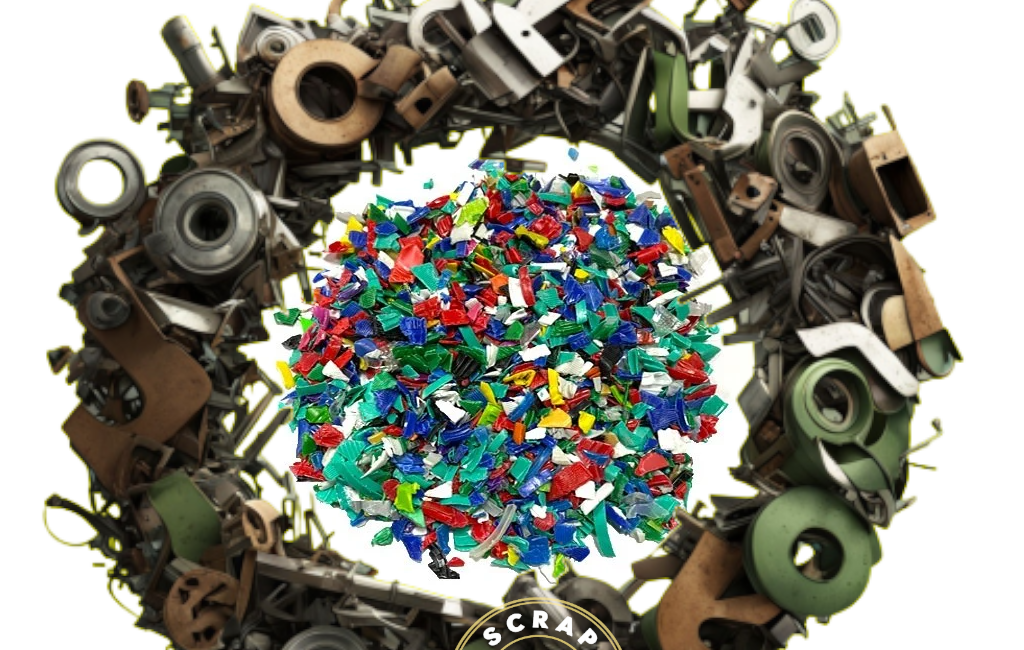PP Scrap: A Comprehensive Guide to Recycling and Sustainability
Introduction
- Brief overview of PP (Polypropylene) as a versatile plastic.
- Importance of recycling PP scrap in the global effort to reduce plastic waste.
- Goals of the article: to educate on sources, processes, benefits, and challenges related to PP scrap recycling.
What is PP Scrap?
- Definition of PP (Polypropylene) and its widespread use in products like packaging, automotive parts, and textiles.
- Examples of common PP scrap: containers, bottle caps, and medical equipment.
- Statistics on global PP production and waste generation.
Sources of PP Scrap
- Household waste: Food containers, detergent bottles, and other consumer products.
- Industrial waste: Manufacturing offcuts, packaging materials, and automotive parts.
- Agricultural waste: PP materials from farming (e.g., seed bags, irrigation pipes).
- Medical waste: Non-contaminated medical PP products like syringes and IV bottles.
The PP Scrap Recycling Process
- Collection: Methods of gathering PP scrap from households, industries, and agricultural sites.
- Sorting: Manual and automated systems for separating PP from other materials.
- Cleaning: Removing contaminants to ensure purity.
- Shredding and Pelletizing: Breaking down PP scrap into smaller pieces and converting them into pellets.
- Reuse in Manufacturing: Using recycled PP pellets to produce new products.
Benefits of Recycling PP Scrap
- Environmental Impact:
- Reduces plastic waste in landfills and oceans.
- Decreases greenhouse gas emissions compared to virgin PP production.
- Economic Advantages:
- Lower costs for industries using recycled PP.
- Creation of jobs in the recycling sector.
- Resource Conservation:
- Reduces dependency on fossil fuels used in producing virgin polypropylene.
Challenges in Recycling PP Scrap
- Contamination: Presence of food residues, adhesives, and other materials in PP scrap.
- Sorting Complexity: Difficulties in distinguishing PP from similar plastics.
- Economic Viability: High initial costs for setting up recycling facilities.
- Market Demand: Fluctuations in the demand for recycled PP products.
Innovative Technologies in PP Scrap Recycling
- Advanced Sorting Systems: Use of AI and sensors for better material identification.
- Chemical Recycling: Breaking down PP to its molecular level for higher-quality recycled materials.
- New Product Innovations: Examples of industries innovating with recycled PP, such as sustainable packaging and automotive components.
The Global Perspective on PP Scrap
- Key Players:
- Countries leading in PP recycling efforts (e.g., Germany, Japan).
- Corporations investing in sustainable practices (e.g., Unilever, Nestlé).
- International Policies: Overview of global regulations encouraging plastic recycling.
- Statistics: Percentage of PP recycled globally and growth trends.
Case Studies and Success Stories
- Highlight companies or communities excelling in PP recycling.
- Examples of innovative products made from recycled PP.
- Impact of initiatives like extended producer responsibility (EPR).
The Role of Citizens in PP Scrap Recycling
- Reducing Contamination: Educating the public on proper waste disposal.
- Sorting and Cleaning: Encouraging households to sort PP items for recycling.
- Community Programs: Importance of local recycling drives and awareness campaigns.
The Future of PP Scrap Recycling
- Emerging Technologies: AI, blockchain for traceability, and chemical recycling advancements.
- Circular Economy: Moving from a linear to a circular model in PP production and reuse.
- Sustainability Goals: Alignment with global sustainability initiatives like the UN SDGs.
Conclusion
- Summarize the importance of recycling PP scrap for environmental, economic, and social benefits.
- Call to action for governments, industries, and individuals to take active roles in PP recycling.
- Future outlook: Vision for a world with efficient and widespread PP recycling.
Additional Elements
- Statistics: Include figures on PP production, recycling rates, and environmental impact.
- Infographics: Visual representations of the PP recycling process and global recycling trends.
- Quotes and Expert Opinions: Insights from industry leaders and environmentalists.
- FAQs: Common questions about PP scrap and its recycling.

Leave a Comment